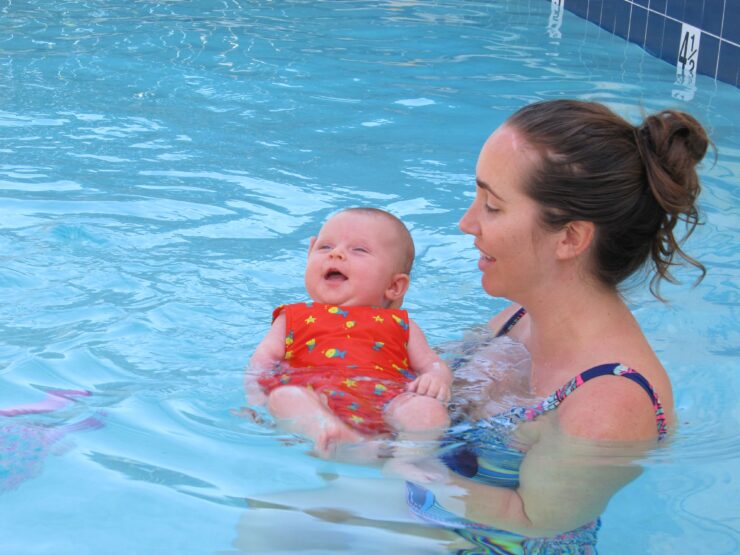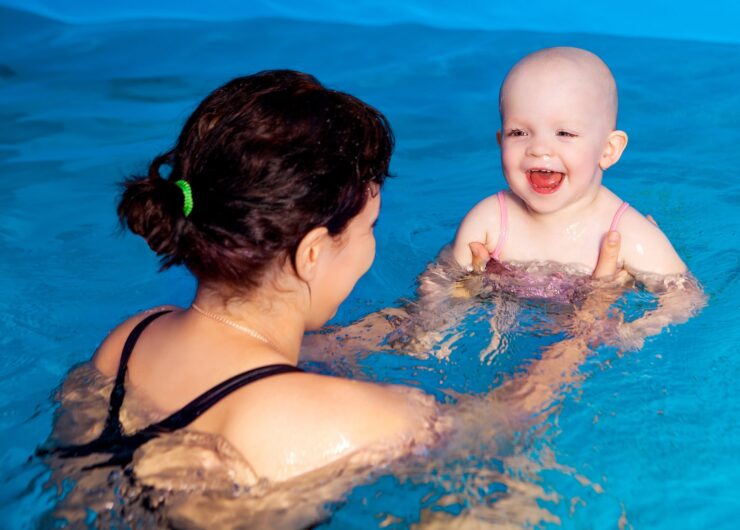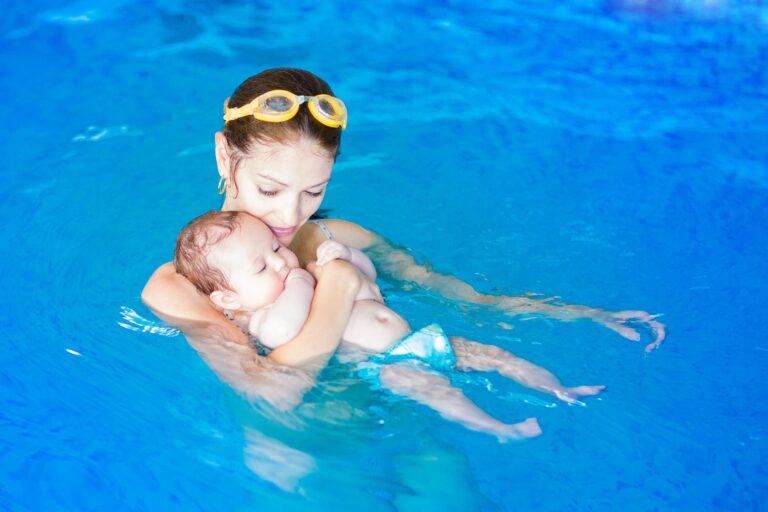Are you ready to dive into the wonderful world of swimming with your baby? Swimming with your little one can be a joyful and bonding experience, providing numerous benefits for their development and water comfort. Whether you’re a seasoned swimmer or new to the water, this article will provide you with valuable tips to make swimming with your baby a positive and enjoyable adventure.
Why Swim with Your Baby?

Swimming offers a unique opportunity to introduce your baby to the water at an early age. Not only does it promote physical activity and water confidence, but it also strengthens the bond between parent and child. Some benefits of swimming with your baby include:
- Physical Development: Swimming helps enhance your baby’s muscle strength, coordination, and motor skills. The water’s buoyancy supports their body and allows for freedom of movement.
- Water Comfort: By introducing your baby to water at a young age, you can help them become familiar and comfortable in aquatic environments, reducing the likelihood of fear or anxiety later in life.
- Sensory Stimulation: The water provides a sensory-rich environment that stimulates your baby’s senses, promoting cognitive development and sensory integration.
- Bonding and Social Interaction: Swimming with your baby fosters a strong parent-child bond through skin-to-skin contact, eye contact, and shared experiences in the water. It also offers opportunities for social interaction with other parents and infants during swim classes or group sessions.
Tips for a Positive and Enjoyable Experience

To ensure a positive and enjoyable swimming experience with your baby, consider the following tips:
1. Start at the Right Age
It’s generally recommended to wait until your baby is at least six months old before introducing them to swimming. At this age, they have better head and neck control, making them more comfortable in the water. However, always consult with your pediatrician to determine if your baby is ready for swimming.
2. Choose the Right Swim Environment
Select a swim environment that is safe, clean, and suitable for infants. Look for facilities that offer swimming classes for infants, such as SwimRight Academy, located in West Hills. These specialized classes provide a nurturing and supportive environment for babies to explore the water under the guidance of experienced instructors.
3. Invest in Appropriate Swim Gear
Invest in swim gear designed specifically for infants, including swim diapers, swimwear with built-in flotation devices, and UV-protective swim hats. These items ensure your baby’s comfort, safety, and protection from the sun’s harmful rays.
4. Start Slow and Gradual
When starting swimming sessions with your baby, begin with short and gentle sessions. Gradually increase the duration as your baby becomes more comfortable in the water. Follow their cues and always prioritize their comfort and enjoyment.
5. Maintain Constant Supervision
Never leave your baby unattended in or near water, even if they are in a controlled swim environment. Always maintain constant supervision and keep your baby within arm’s reach. Remember, water safety is paramount.
Frequently Asked Questions

Here are answers to some frequently asked questions about swimming with your baby:
Q: When can I start swimming classes for my infant?
A: It is generally safe to start swimming classes for infants around six months of age. However, consult with your pediatrician to ensure your baby is developmentally ready.
Q: Are there any health risks associated with swimming for infants?
A: As long as proper safety measures are followed, swimming is generally safe for infants. However, it’s important to ensure the water is clean and well-maintained to provide a hygienic swimming environment.
Q: How can I help my baby feel more comfortable in the water?
A: Gradual exposure and gentle acclimatization are key. Start with brief visits to the water, hold your baby close, and provide plenty of reassurance and positive reinforcement.
Q: Can I teach my baby to swim on my own, or should I enroll them in swim classes?
A: While it’s possible to introduce basic water skills on your own, enrolling your baby in swim classes offers professional guidance, structured lessons, and social interaction with other infants, which can enhance their overall swimming experience.
Q: What if my baby doesn’t enjoy swimming initially?
A: Every baby is unique, and it’s normal for some to take time to adjust to the water. Be patient, create a supportive environment, and continue exposing them to water gradually. Over time, they may grow to enjoy swimming.
Q: How often should I take my baby swimming?
A: The frequency of swimming sessions can vary depending on your baby’s comfort level and availability. Starting with one to two sessions per week and gradually increasing can be a good approach. Listen to your baby’s cues and adjust accordingly.
Remember, the most important aspect of swimming with your baby is to create a positive and enjoyable experience. Cherish the bonding moments, celebrate their progress, and prioritize their safety at all times. With proper guidance and nurturing, your little one can develop a love for swimming and enjoy the many benefits it offers.
Disclaimer: This article is for informational purposes only and does not substitute professional medical advice. Consult with your pediatrician before starting any swimming activities with your baby.

